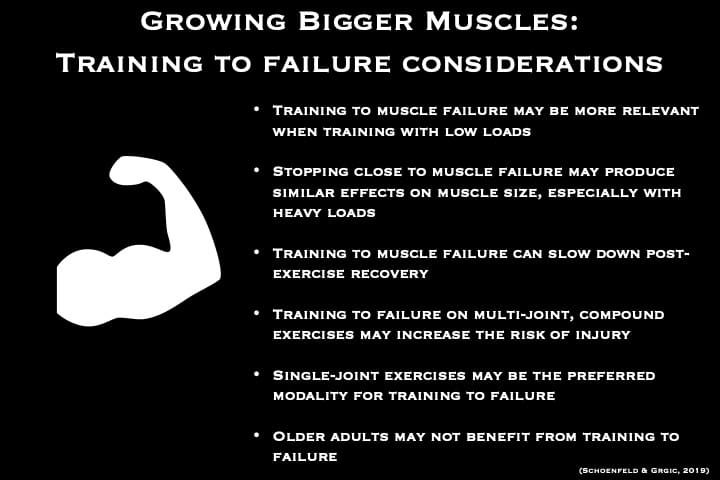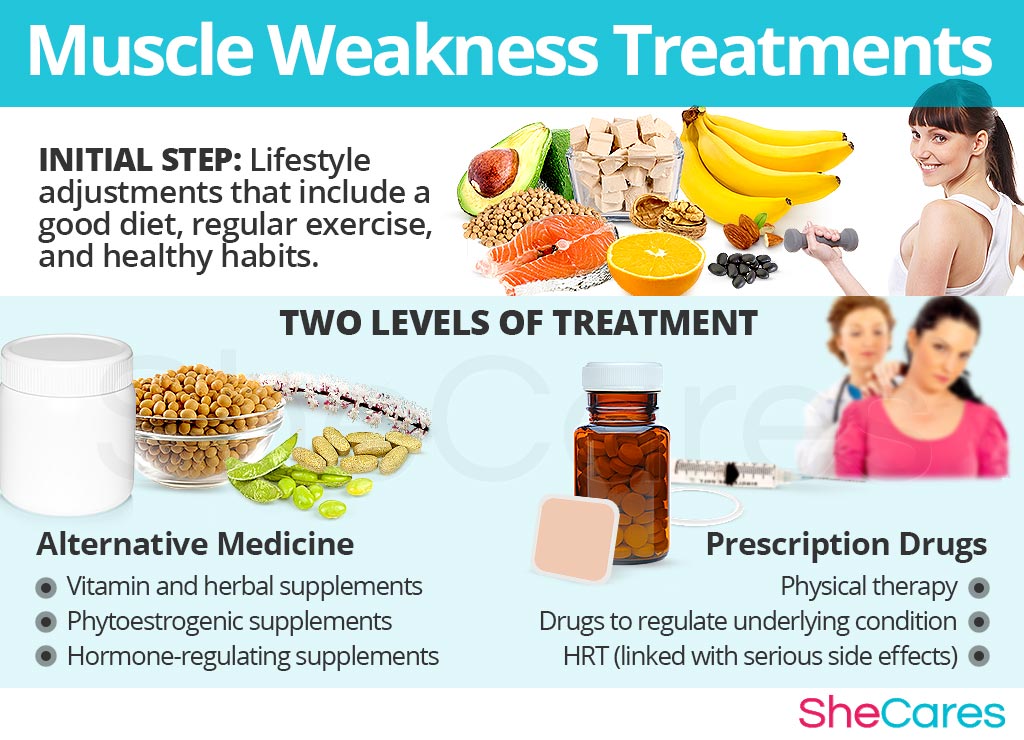Training to muscle failure can boost muscle growth and strength. It demands caution to avoid overtraining and injuries.
Muscle failure refers to the point where muscles can no longer complete a repetition with good form. Many bodybuilders and athletes use this technique to maximize their workouts. Training to muscle failure can stimulate muscle fibers more intensely, leading to potential hypertrophy.
This method isn’t necessary for everyone and may not suit beginners. Overdoing it can lead to overtraining, muscle fatigue, and injury risks. Balancing intensity and recovery is crucial. Understanding your body’s limits and incorporating rest days are essential. Consulting a fitness professional can provide personalized advice. Using muscle failure strategically can enhance your fitness routine without compromising safety.
Training To Muscle Failure
Training to muscle failure means pushing your muscles until they can’t do another rep. This method challenges your strength and endurance. It can help build muscle mass and improve overall fitness. Some athletes and bodybuilders use this technique for better results. Training to muscle failure requires good form to avoid injury.
Several methods help achieve muscle failure. Drop sets involve reducing the weight after each set. Forced reps have a partner assist you with extra reps. Rest-pause sets give short breaks between reps. Negatives focus on the lowering phase of the exercise. These techniques push muscles to their limits for growth.
Physiological Impact
Training to muscle failure triggers significant muscle growth and strength gains. This intense approach can enhance muscle fiber recruitment and endurance. Balancing intensity and recovery is crucial to avoid overtraining and injury.
Muscle Fiber Activation
Training to muscle failure can activate more muscle fibers. This can lead to greater muscle growth. Muscle fibers come in different types. Type I fibers are used for endurance. Type II fibers are used for power and strength. Training to failure can help recruit more Type II fibers. This can help build bigger and stronger muscles.
Hormonal Responses
Training to failure can also boost hormonal responses. This includes testosterone and growth hormone levels. These hormones help with muscle growth. Increased hormone levels can improve muscle repair and recovery. This can make muscles stronger over time. Remember to rest well after training hard.
Benefits Of Training To Failure
Training to failure can boost muscle growth. It pushes your muscles to their limits. This stress encourages muscle fibers to grow. Your body sees the need for stronger muscles. It adapts and builds more muscle tissue. This leads to bigger muscles over time.
Strength gains are another benefit. By training to failure, you teach your muscles to handle more weight. This helps you lift heavier over time. Your muscles become more efficient. They learn to activate more fibers. This results in greater strength.

Credit: www.tonal.com
Drawbacks And Risks
Overtraining can lead to burnout. It makes you feel tired all the time. Muscles may not grow if they are always tired. Your body needs rest to get stronger. Overtraining can also make you feel sad or stressed. Your performance may drop, and you could get hurt more easily. Balanced workouts help you stay healthy and strong.
Training to muscle failure can cause injuries. Your form may get worse as you get tired. Bad form leads to pulled muscles or sprains. Some injuries might take a long time to heal. Proper technique and rest are important to prevent injuries. Listen to your body to stay safe.
Scientific Studies
Studies show mixed results on training to muscle failure. Some research finds increased muscle growth. Other studies suggest no additional benefit. Training to failure can lead to greater muscle fatigue. This may increase the risk of injury.
Some studies show improved strength gains with failure training. Others see no significant difference compared to non-failure training. Muscle recovery can be longer after failure training. This might affect your next workout.
Not all evidence supports failure training. Some research shows no benefit over regular training. Others find potential risks like overtraining. Inconsistent results make it hard to draw firm conclusions.
Different studies use varying methods. This might explain the mixed findings. More research is needed to understand the best approach.
Training Protocols
Choosing between volume and intensity is important for muscle growth. Volume means doing more sets and reps. Intensity means lifting heavier weights. Both methods can help you get stronger. Volume training is good for building muscle endurance. Intensity training is best for increasing strength quickly. Mixing both can give you the best results. Listen to your body and adjust your training.
Periodization means changing your workout plan over time. This helps prevent plateaus and keeps your muscles growing. There are different types of periodization. Linear periodization starts with light weights and increases over time. Non-linear periodization changes the weights more often. Both methods can be effective. Choose the one that fits your goals and schedule best.
Alternative Strategies
Submaximal training means lifting weights that are lighter than your max. This allows you to do more repetitions without getting too tired. It’s a good way to build strength and endurance. Many athletes use this method to avoid injuries. It can also help improve your form and technique. Submaximal training is great for beginners and advanced lifters alike.
Progressive overload is a key principle in strength training. It means gradually increasing the weight, reps, or intensity of your workouts. This helps your muscles grow stronger over time. Start with a weight you can lift comfortably. Then slowly add more weight or reps each week. This method helps you avoid plateaus. It also keeps your workouts challenging and effective.
:max_bytes(150000):strip_icc()/GettyImages-89974940-5680b76c5f9b586a9edf2001.jpg)
Credit: www.verywellfit.com
Personalization And Adaptation
People have different bodies. Some can handle more intense workouts. Others need more rest. Training to muscle failure might work for some. It can be too much for others. Listen to your body. Adjust your workout plan accordingly.
Goals matter. Some want big muscles. Others want strength or endurance. Training to muscle failure can help build muscle. It might not be the best for endurance. Tailor your approach to your goals. Always consider what you want to achieve.
Practical Tips
Rest is important for muscle recovery. Sleep at least 8 hours each night. Hydrate well by drinking plenty of water. Stretch your muscles gently after workouts. Nutrition plays a big role too. Eat protein-rich foods to help rebuild muscles. Carbs give you energy for the next session.
Keep a workout journal. Write down the exercises you do. Note how many reps and sets. Track how you feel after each session. This helps you see improvements. Adjust your training as needed. Listen to your body. Rest more if you feel very tired. Celebrate small victories to stay motivated.

Credit: homegymlife.com
Frequently Asked Questions
What Is Muscle Failure In Training?
Muscle failure occurs when you can’t complete another repetition with proper form. It indicates that your muscles are fully fatigued.
Should Beginners Train To Muscle Failure?
Beginners should avoid muscle failure. It’s better to focus on learning proper form and gradually increasing intensity to prevent injury.
How Often Should You Train To Failure?
Training to failure should be limited. Doing it once or twice a week can prevent overtraining and allow proper recovery.
Is Training To Failure Effective For Muscle Growth?
Yes, training to failure can promote muscle growth. It maximizes muscle fiber recruitment, which can lead to hypertrophy.
Conclusion
Training to muscle failure can be beneficial but requires careful planning. Understand your body’s limits to avoid injury. Balance intense workouts with proper rest and nutrition. Listen to your body and consult fitness experts for personalized advice. Making informed decisions will help you achieve your muscle-building goals safely and effectively.











